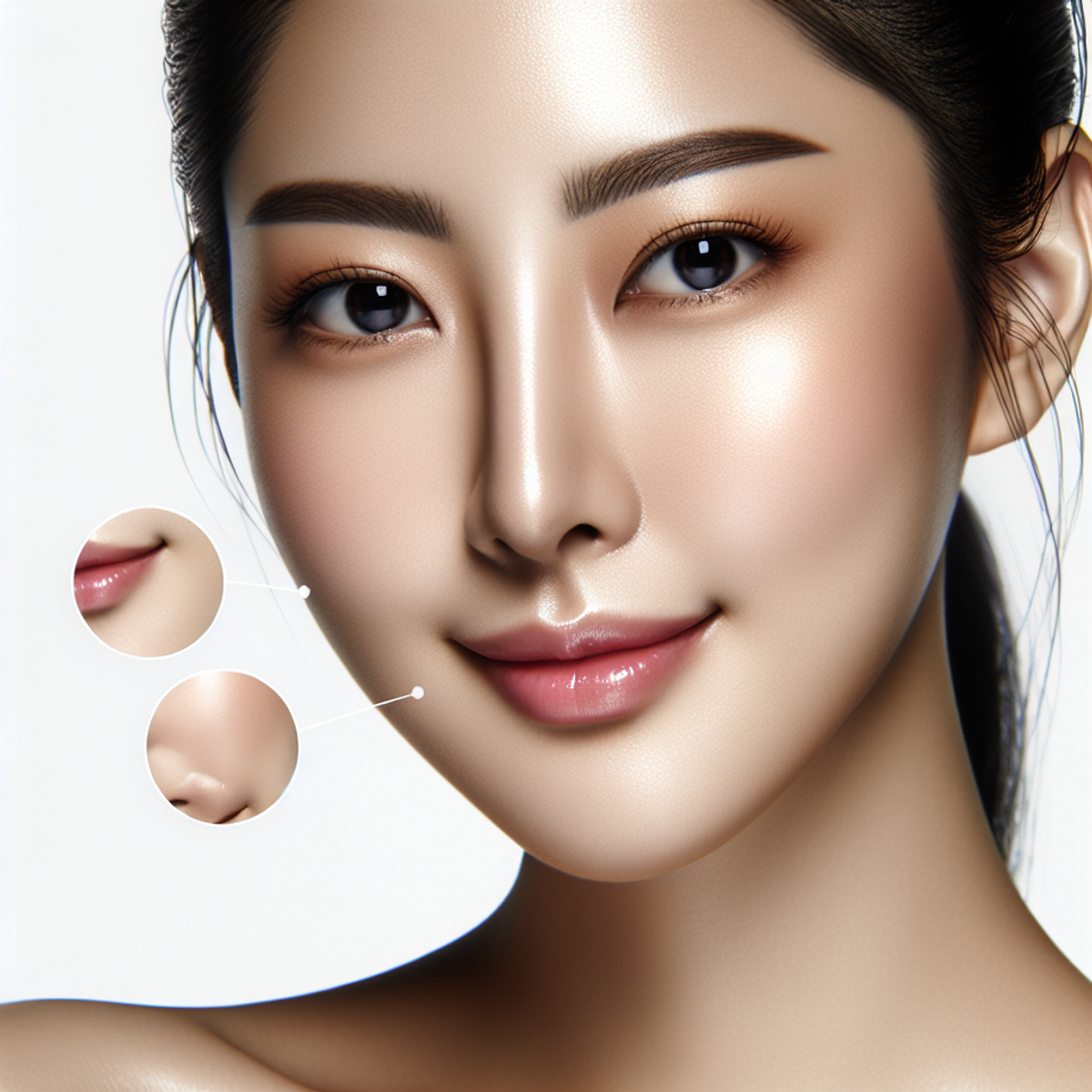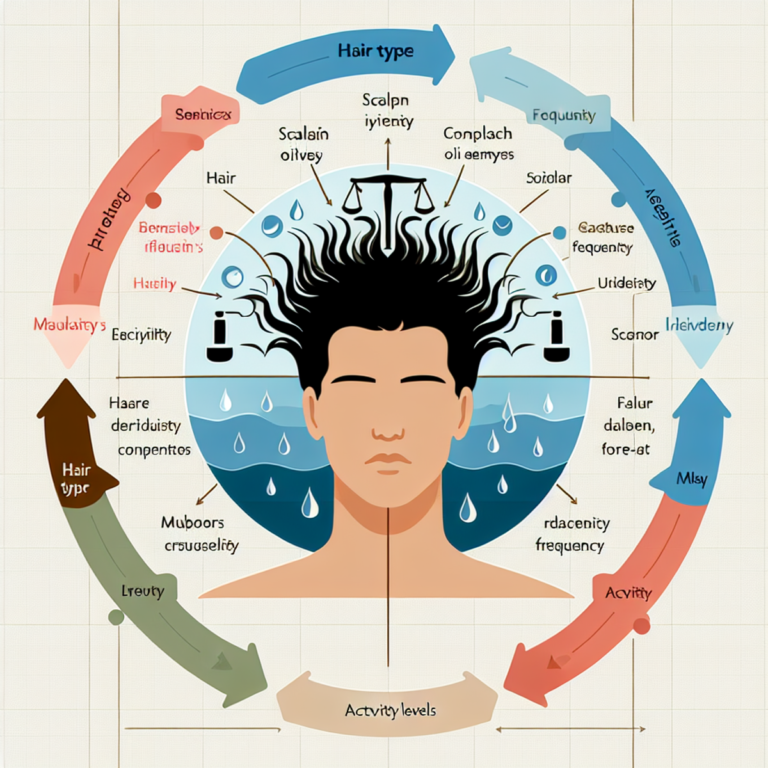Skin-Resurfacing Products to Indulge in on National Self-Care Day

Introduction
Skin resurfacing is a rejuvenating skincare technique that involves removing the top layers of the skin to reveal a fresh, glowing complexion. It’s an effective way to target various skin issues like:
- Dullness
- Dryness
- Rough texture
- Sun damage
- Fine lines
- Acne scars
- Large pores
- Discoloration
On National Self-Care Day, it’s important to prioritize self-care rituals that nourish and revitalize our skin. Taking care of our skin is a crucial part of this celebration, promoting both physical well-being and inner confidence.
In this article, we’ll explore a carefully chosen selection of skin-resurfacing products that provide a luxurious self-care experience for National Self-Care Day. These products are specifically designed to:
- Nourish your skin
- Address your specific concerns
- Allow you to enjoy a rejuvenating skincare routine that fits with the concept of self-care
By using these skin-resurfacing products, you can enhance your self-care routine and give your skin the refreshing treatment it deserves.
Understanding Skin Resurfacing
Skin resurfacing refers to various methods used to improve the texture and appearance of the skin. Whether it’s addressing acne scars or reducing fine lines and wrinkles, this treatment has gained popularity for its ability to rejuvenate the skin.
Benefits of Skin Resurfacing
Here are some key benefits of incorporating skin resurfacing into your skincare routine:
- Improved Collagen Production: Regular skin resurfacing routines lead to improved collagen production, resulting in firmer and more elastic skin.
- Enhanced Product Absorption: Enhanced product absorption is a key benefit of skin resurfacing as it allows skincare products to penetrate deeper into the skin, maximizing their effectiveness.
- Reduction in Fine Lines and Wrinkles: Skin resurfacing can reduce the appearance of fine lines and wrinkles by promoting cellular turnover and stimulating the production of new, healthy skin cells.
- Addressing Acne Scars: It is effective in addressing acne scars by smoothing out uneven skin texture and promoting the growth of new skin cells to replace scarred tissue.
- Minimization of Hyperpigmentation: Hyperpigmentation issues such as dark spots and uneven skin tone can be minimized through consistent skin resurfacing treatments, resulting in a more even complexion.
The benefits of regular skin resurfacing are multifaceted, offering both cosmetic and functional improvements for the skin. By understanding these benefits, individuals can make informed decisions about incorporating skin resurfacing into their self-care routines.
If you are interested in trying out different methods of skin resurfacing, you may also want to explore hydra-needling, a non-invasive treatment option that can further enhance the results obtained through traditional skin resurfacing techniques.
Considerations for Different Skin Types
When it comes to skin resurfacing, it’s important to consider the specific needs and concerns of different skin types. Understanding these considerations can help you choose the most suitable methods and products for your skin. Here are some key points to keep in mind:
- Skin Concerns: Common skin concerns like dullness, uneven texture, and discoloration can be effectively treated with skin resurfacing. By removing the top layers of the skin, resurfacing methods can reveal a smoother, brighter complexion.
- Methods of Skin Resurfacing: There are various methods of skin resurfacing, ranging from professional treatments to at-home products. Professional treatments include microdermabrasion, chemical peels, and micro-needling, while at-home options often focus on mechanical exfoliation (such as scrubs) or chemical exfoliation (using products with alpha-hydroxy acids or beta-hydroxy acids).
- Post-Inflammatory Hyperpigmentation: Individuals with darker skin tones need to be cautious about the risk of post-inflammatory hyperpigmentation (PIH) when considering skin resurfacing methods. PIH refers to darkening of the skin that can occur after inflammation or injury. To minimize the risk, it’s essential to choose gentle resurfacing techniques and consult with a dermatologist if needed.
- Patch Testing and Sensitivity: Patch testing is crucial for everyone, regardless of their skin type. It helps identify any potential allergic reactions or irritations caused by specific ingredients in resurfacing products. Additionally, individuals with sensitive skin should opt for milder exfoliation methods and avoid aggressive techniques that may cause redness or irritation.
- Compatibility with Prescription Medications: If you are using prescription medications for any skin condition or concern, it’s important to consult with your dermatologist before incorporating any new resurfacing products or techniques into your skincare routine. Some medications may increase skin sensitivity, making it necessary to adjust the intensity or frequency of resurfacing treatments.
By considering these factors, you can make informed decisions about the most suitable skin resurfacing methods and products for your individual needs. Remember that everyone’s skin is unique, and what works for one person may not work for another. It’s always advisable to consult with a skincare professional or dermatologist for personalized recommendations and guidance.
At-Home Skin Resurfacing Products
Using At-Home Resurfacing Products Safely
1. Prepping the Skin
Before using at-home resurfacing products, it’s crucial to prep the skin through thorough cleansing and moisturizing. This helps to ensure that the skin is free from any impurities and adequately hydrated, creating a suitable canvas for the resurfacing process.
2. Incorporating Key Skincare Ingredients
When integrating at-home resurfacing treatments into your skincare routine, it’s important to consider the interaction with other key ingredients. For instance, if you use retinol as part of your regimen, it’s advisable to wait for about an hour after applying the resurfacing product before using retinol. This helps to minimize the potential for irritation or adverse reactions.
3. Role of Sunscreen
After undergoing the resurfacing process, the skin becomes more vulnerable to UV damage. Therefore, it is essential to emphasize the significance of sunscreen application as a protective measure. Sunscreen helps shield the newly revealed skin from harmful UV rays and prevents further damage, supporting the overall effectiveness of the resurfacing treatment.
By following these steps and recommendations, you can safely and effectively incorporate at-home resurfacing products into your skincare routine for optimal results.
Key Ingredients to Look for in At-Home Resurfacing Products
When it comes to at-home resurfacing products, there are key ingredients you should look for to ensure their effectiveness and safety. These ingredients have been scientifically proven to enhance the resurfacing process and provide numerous benefits for your skin. Let’s explore the science behind some of these powerhouse ingredients:
Retinoids: Retinoids, such as retinol, are a type of vitamin A derivative that work wonders for skin resurfacing. They accelerate cell turnover, stimulate collagen production, and help reduce the appearance of fine lines, wrinkles, and hyperpigmentation. Incorporating a retinoid product into your routine can enhance the results of your at-home resurfacing treatments and promote overall skin health.
Keratolytics (AHAs/BHAs): AHAs (alpha-hydroxy acids) and BHAs (beta-hydroxy acids) are chemical exfoliants commonly found in at-home resurfacing products. AHAs like glycolic, mandelic, and lactic acids help remove dead skin cells on the surface, revealing smoother and brighter skin. BHAs like salicylic acid penetrate deeper into the pores, making them effective for treating acne-prone skin. These keratolytics gently exfoliate the skin, improving texture, reducing pore size, and fading acne scars. Understanding how these ingredients work well together can help you choose the right product.
Peptides: Peptides are short chains of amino acids that play a crucial role in maintaining skin health. They promote collagen synthesis and improve elasticity, resulting in firmer and more youthful-looking skin. Including peptides in your at-home resurfacing routine can help strengthen your skin’s barrier function and enhance its ability to repair itself.
Niacinamide: Niacinamide is a form of vitamin B3 that offers multiple benefits for resurfaced skin. It helps regulate oil production, reduces redness and inflammation, and improves overall skin texture. Niacinamide is also known for its ability to fade hyperpigmentation and even out skin tone, making it an excellent ingredient to look for in at-home resurfacing products according to the Cleveland Clinic.
Vitamin C: Vitamin C is a potent antioxidant that protects the skin against free radical damage caused by environmental stressors. It also helps brighten the complexion and fade dark spots, resulting in a more even-toned and radiant appearance. Incorporating vitamin C into your at-home resurfacing routine can enhance the effectiveness of other ingredients and promote a healthier-looking complexion.
By understanding the science behind these key ingredients, you can make informed choices when selecting at-home resurfacing products. Look for products that contain a combination of these ingredients to maximize the benefits for your skin.
Remember, consistency is key when incorporating these ingredients into your skincare routine. Start slowly and gradually increase usage to allow your skin to adjust. It’s also essential to follow the instructions provided by the product manufacturer and consult with a dermatologist
Product Recommendations for National Self-Care Day
Here are some carefully selected skin-resurfacing products for a luxurious self-care experience on National Self-Care Day:
1. FAB Skin Lab Resurfacing Liquid
Overview of FAB Skin Lab Resurfacing Liquid: The FAB Skin Lab Resurfacing Liquid is an exceptional choice for at-home resurfacing treatment. With its 10% concentration of four Alpha-Hydroxy Acids (AHAs), including glycolic acid, this serum effectively addresses concerns such as uneven texture and dullness. Its potent combination of AHAs works to reveal smoother, more radiant skin.
Key Features and Ingredients: This resurfacing liquid is formulated with a blend of glycolic, lactic, malic, and tartaric acids to exfoliate dead skin cells and promote cell turnover. It also contains niacinamide, a powerful antioxidant that helps improve the appearance of enlarged pores and uneven skin tone.
Suitability for All Skin Types: One of its standout features is its suitability for all skin types, making it an inclusive option for individuals with varying skincare needs. Whether you have oily, combination, normal, or dry skin, the FAB Skin Lab Resurfacing Liquid offers the benefits of professional-grade exfoliation from the comfort of your home.
Addressing Concerns: For those dealing with uneven texture and dullness, this product provides a targeted solution to reveal smoother, brighter skin. It also aids in minimizing the appearance of fine lines and wrinkles, promoting a more youthful complexion over time.
Incorporating Skin-Resurfacing Products into Your Long-Term Self-Care Routine
To truly benefit from skin resurfacing, it’s important to see it as part of your long-term self-care routine rather than a one-time treat. By making resurfacing products a regular part of your skincare routine, you can keep your skin healthy and looking its best over time. Here are some tips for including these products in your routine:
- Be consistent: Using resurfacing products regularly is key. Make it a habit to use them as directed by the manufacturer. Consistency will give you better results and help maintain the improvements from resurfacing.
- Start slow and gradually increase: If you’re new to skin resurfacing or have sensitive skin, begin with products that have lower concentrations of active ingredients. This will let your skin adjust to the process without irritation. As your skin gets used to it, you can slowly increase the strength of the products.
- Combine with other skincare products: Skin resurfacing works well with other skincare products, making them more effective. Think about adding retinol or exfoliants to your routine along with resurfacing treatments. Retinol boosts collagen production and improves skin texture, while exfoliants remove dead skin cells and promote cell turnover.
- Always wear sunscreen: After resurfacing, your skin may be more sensitive to the sun. It’s crucial to protect it from harmful UV rays by wearing sunscreen every day. Look for a broad-spectrum sunscreen with an SPF of at least 30 and apply it generously before going outside.
Remember, everyone’s skin is different, so pay attention to what your skin needs and adjust your routine accordingly. If you experience any irritation or discomfort, reduce how often you use resurfacing products or try milder options. And if you want personalized advice on incorporating skin resurfacing into your self-care routine, don’t hesitate to consult a dermatologist.
By making resurfacing products a part of your daily skincare routine and following these tips, you can enjoy the long-lasting benefits of skin resurfacing and keep your skin glowing and healthy.
The Importance of Professional Guidance in Skin Resurfacing
When it comes to advanced skin resurfacing methods, such as chemical peels or micro-needling, seeking professional guidance is crucial. Consulting with a dermatologist or esthetician before attempting these treatments at home can ensure that you achieve the desired results without compromising your skin’s health.
Here are some key reasons why professional guidance is essential in the realm of skin resurfacing:
- Expertise and Experience: Dermatologists and estheticians possess extensive knowledge and experience in skincare. They can accurately assess your skin type, understand your specific concerns, and recommend suitable resurfacing methods accordingly. Their expertise ensures that you receive personalized advice tailored to your unique needs. This expertise is valuable in understanding the intricacies of skin resurfacing techniques.
- Risk Assessment: Advanced skin resurfacing methods carry potential risks, such as post-inflammatory hyperpigmentation, erythema, or irritation. Professionals can assess your skin’s sensitivity and vulnerability to these risks, helping you make informed decisions about which treatments are suitable for you. An insightful study sheds light on the risks involved in these procedures.
- Customized Treatment Plans: A professional will consider various factors like your age, medical history, and current skincare routine while creating a customized treatment plan. This ensures that the resurfacing method chosen will complement your existing skincare regimen and yield optimal results. The importance of tailored treatment plans is highlighted in this article published by the National Center for Biotechnology Information.
- Monitoring and Follow-up: Undergoing advanced skin resurfacing treatments requires careful monitoring for any adverse reactions or complications. Professionals can provide ongoing support, monitor your progress, and make necessary adjustments to your treatment plan to ensure the best outcomes. For instance, St. Pete Skin and Laser emphasizes the significance of post-treatment care and follow-up.
Remember, professional guidance is particularly important if you have specific conditions like rosacea or eczema or if you are taking prescription medications that may interact with certain resurfacing treatments.
In summary, consulting with a dermatologist or esthetician before attempting advanced skin resurfacing methods at home is essential for ensuring both safety and effectiveness. Their expertise, experience, and personalized approach will help you achieve the best possible results while minimizing potential risks. So, prioritize professional guidance to enjoy the benefits of skin resurfacing with confidence.
Conclusion
On National Self-Care Day, taking care of our skin is an important way to show ourselves love and prioritize our well-being. While trying out the recommended skin-resurfacing products, keep in mind that this self-care practice should extend beyond just one day.
Here are a few key takeaways to remember:
- Consistency is key: Make skincare a regular part of your routine to maintain your skin’s health and reap long-term benefits.
- DIY vs professional: Strike a balance between at-home skincare rituals and professional treatments. Enjoy pampering yourself with luxurious products while also being open to seeking expert advice when needed.
- Self-care journey: View self-care as an ongoing journey rather than a one-time event. Take time to understand your skin’s needs, experiment with different products, and find what works best for you.
- Skin resurfacing: Consider exploring the world of skin resurfacing treatments, such as chemical peels or microdermabrasion, for more intensive rejuvenation.
So go ahead and treat yourself not just on National Self-Care Day but every day! Give your skin the care and attention it deserves, and let the process of self-care be a celebration of self-love and personal growth.







